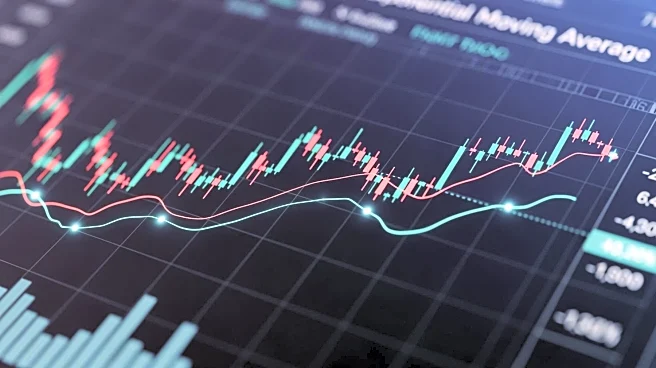What's Happening?
The Exponential Moving Average (EMA) is a tool used by traders to analyze market trends by emphasizing recent price movements. Unlike the Simple Moving Average, the EMA gives more weight to the latest data, allowing traders to react more quickly to changes
in market momentum. This characteristic makes it particularly useful for short-term traders who aim to catch trends early. However, the EMA's sensitivity to recent data can also lead to false signals in volatile markets. Traders often use longer EMAs, such as the 50 or 200-day averages, to identify primary trends, while shorter EMAs are preferred for intraday trading to capture short bursts of momentum.
Why It's Important?
The use of EMA in trading is significant as it provides a method for traders to filter out market noise and focus on the most recent price movements. This can lead to more informed trading decisions, especially in fast-paced markets. By understanding and applying EMA, traders can potentially improve their ability to predict market trends and make timely trades. This tool is crucial for both individual traders and institutional investors who need to manage risk and optimize their trading strategies. The ability to quickly adapt to market changes can be a competitive advantage in the financial markets.
What's Next?
Traders and analysts will continue to refine their use of EMA and other technical indicators to enhance their trading strategies. As markets evolve, the development of new algorithms and trading systems that incorporate EMA and other moving averages will likely continue. Additionally, educational resources and trading platforms may expand their offerings to include more sophisticated tools and tutorials on using EMA effectively. The ongoing analysis of market trends and the integration of EMA into trading strategies will remain a focus for those seeking to maximize their trading performance.
Beyond the Headlines
The application of EMA in trading also highlights the broader trend of increasing reliance on technical analysis in financial markets. As traders seek to gain an edge, the use of sophisticated tools and data-driven strategies becomes more prevalent. This shift may influence the development of new financial products and services tailored to traders who prioritize technical analysis. Furthermore, the emphasis on recent data in EMA reflects a growing demand for real-time information and analytics in trading, underscoring the importance of technology in modern financial markets.













